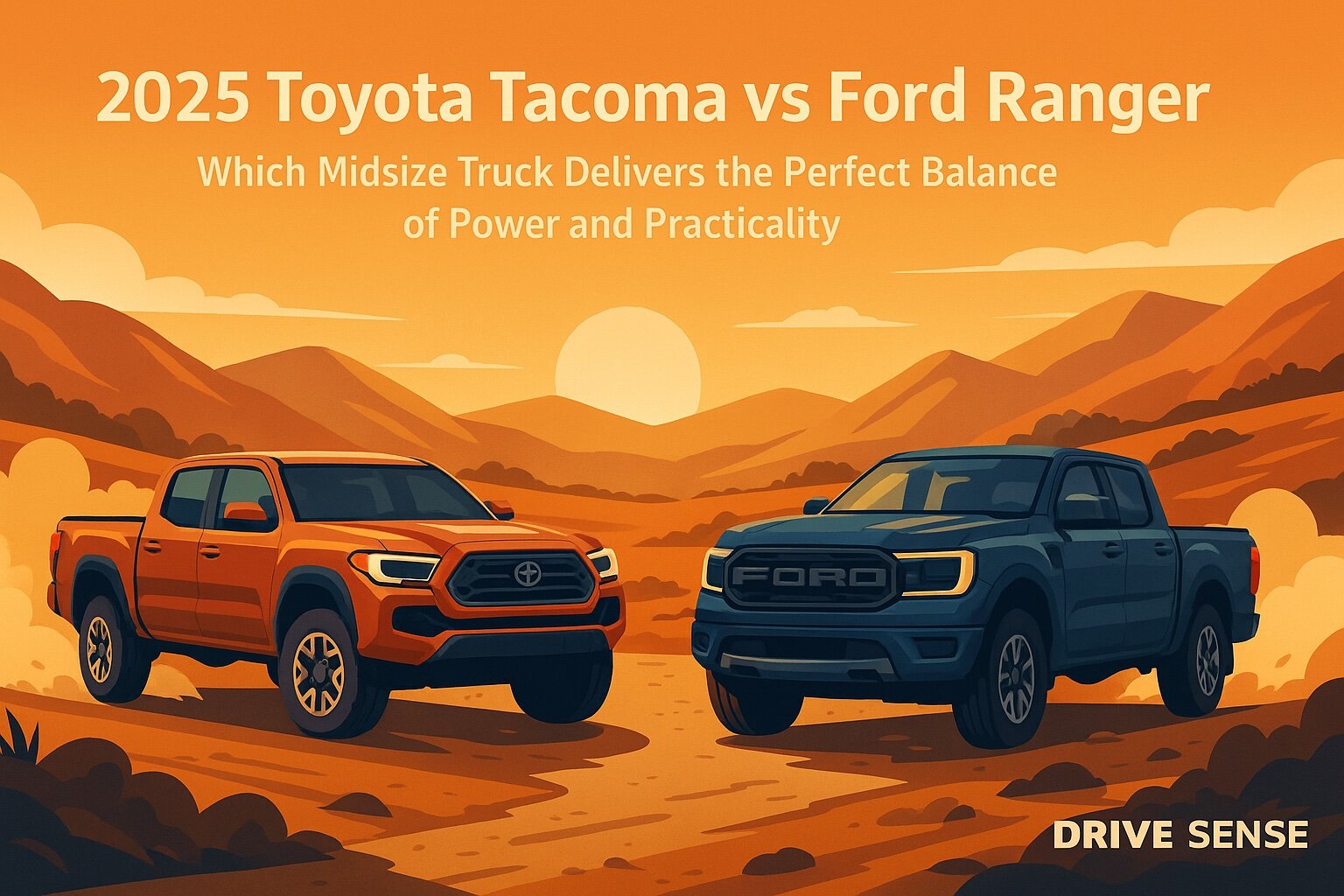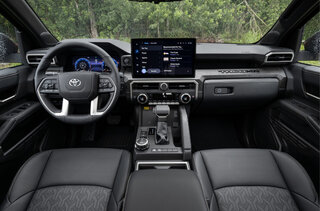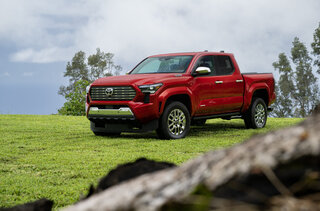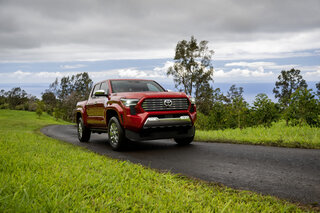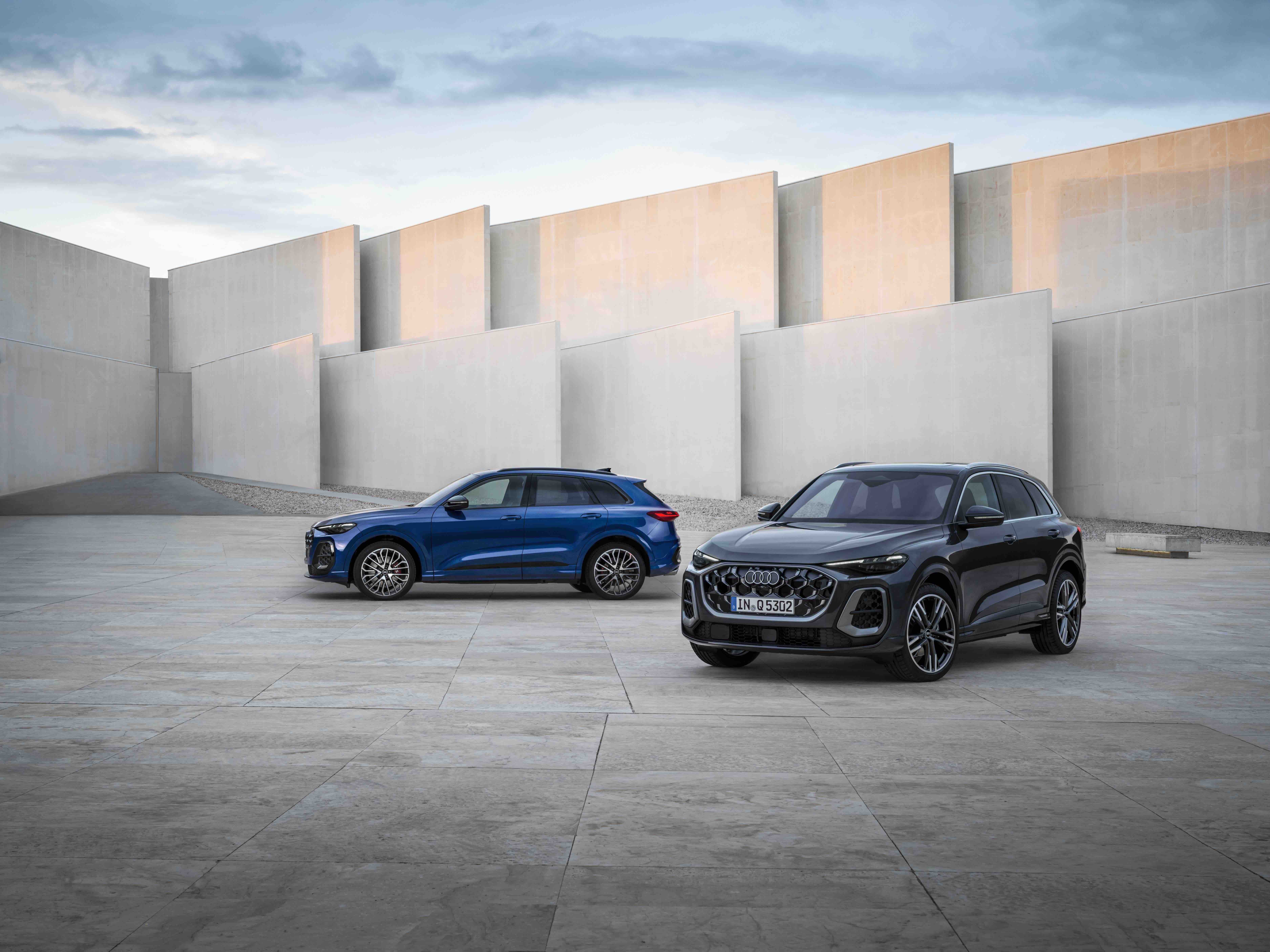Detroit Showdown: A Fresh Take on Midsize Muscle
The midsize pickup scene in America has always had a bit of a chip on its shoulder. Big trucks grab headlines, but it’s rigs like the Toyota Tacoma and Ford Ranger that do the daily heavy lifting hauling mulch, tackling snowy commutes, and squeezing into city garages. For 2025, both have been reimagined: the Tacoma, a perennial bestseller riding a new platform; and the Ranger, freshly updated with more tech and brawn than ever. I’ve spent time behind the wheel of each and, after 15 years writing about Detroit iron (and everything else on four wheels), I can say this generation’s contest is closer than ever.
Engines & Guts: Turbo Torque vs. Hybrid Hype
Let’s get to the heart of it: powertrains. The 2025 Tacoma ditches its old V6 in favor of turbocharged four-cylinder options and, for the first time, an available hybrid called i-FORCE MAX. Base Tacomas run with a 2.4-liter turbo making 228 hp (SR), while most trims get 278 hp and 317 lb-ft (automatic). The hybrid cranks out a muscular 326 hp and 465 lb-ft a torque figure that actually beats some full-sizers.
Ford’s Ranger sticks to its guns with a 2.3-liter EcoBoost four pumping out 270 hp and 310 lb-ft. For thrill seekers, the new Ranger Raptor drops a 3.0-liter twin-turbo V6 with 405 hp and 430 lb-ft more power than any factory Tacoma, but at a price and with a singular off-road focus.
On paper, these numbers trade blows depending on trim. In practice? The Tacoma’s hybrid delivers instant muscle off the line enough to surprise you merging onto I-94 while Ford’s EcoBoost shines with linear grunt and a familiar turbo whistle. Both are paired to ten-speed automatics (Tacoma offers a six-speed manual on select trims), shifting briskly but sometimes hunting for gears under hard throttle.
Hauling and Towing: Who’s Got Your Back?
Towing is where these trucks earn their keep. The Ford Ranger tops out at an impressive 7,500 pounds (with towing package), which out-muscles most Tacomas; the new Toyota maxes at 6,500 lbs with the i-FORCE MAX hybrid or turbo gas engine. Not far off, but if you’re regularly dragging boats or campers, Ford’s edge matters.
Payload? It’s close: the Tacoma claims up to 1,709 lbs depending on spec; Ranger manages up to about 1,805 lbs. Both will handle weekend projects or dirt bikes without sweat.
Fuel Economy: Still Waiting for Final Numbers
Here’s where we hit our first data snag: as of early summer 2024, EPA fuel economy numbers for both aren’t fully finalized for all trims especially hybrids and Raptors. Historically, Tacoma has trailed rivals in mpg; Toyota claims improved efficiency from its turbos and hybrid, but real-world averages are still filtering in. Ford’s outgoing Ranger managed low-to-mid 20s combined; expect similar or slightly better from the revised model barring dramatic changes.
If sipping fuel tops your list, it may pay to wait for official figures or early owner reports once trucks hit driveways en masse.
Behind the Wheel: Road Manners & First Impressions
Driving both trucks back-to-back is revealing. The new Tacoma rides on Toyota’s TNGA-F platform (shared with Tundra/Sequoia), yielding a stiffer frame and better road isolation than before. There’s still some classic truck jitter over potholes especially in off-road trims but overall composure is much improved. Steering is light but precise enough, with decent feedback through the chunky wheel (though I wouldn’t call it lively).
The Ranger carries over its global chassis but feels more dialed-in this year especially in Lariat trim with adaptive dampers. Its ride is less busy than previous models; steering has just enough weight to inspire confidence at highway speeds without getting numb in town. The EcoBoost has a faint turbo hiss under throttle and pulls smoothly from low rpm quieter inside than older Colorados or even some F-150s I’ve tested recently.
Brake feel is solid on both, though Tacoma’s pedal has a touch more initial bite (perhaps tuned for off-road modulation). Neither truck feels particularly nimble these are still body-on-frame machines but both are easy to place around tight parking lots thanks to high seating positions and decent visibility.
Inside the Cabin: Where Buttons Meet Big Screens
Let’s talk interiors a former weak spot for both brands. In base trims, you’ll still find hard plastics and utilitarian vibes aimed at commercial buyers. Step up even one level (TRD Sport for Toyota; XLT for Ford) and things improve fast: padded dash inserts, clever storage cubbies, and big touchscreens dominate the view.
Toyota goes bold with its new dash design: an available 14-inch center screen anchors everything (8-inch standard), flanked by chunky climate knobs that click satisfyingly when turned finally! Seats are firmer than Ford’s but provide good thigh support for long drives. Rear seat space remains tight if you’re hauling adults regularly; kids or gear fit fine.
Ford plays it safer stylistically but wins points for its digital gauge cluster (standard on mid/high trims) and easy-to-use SYNC4 interface responsive and logically laid out, though not as flashy as Toyota’s setup. Cabin noise is impressively subdued; at 75 mph outside Ann Arbor I could actually take a call without raising my voice something I can’t say about every midsizer.
Tech & Features: Who Packs More Value?
Both trucks bring their A-game here: wireless Apple CarPlay/Android Auto are standard across most trims; each offers heated/cooled seats up front (a first for Tacoma), surround-view cameras for tricky parking lots or trails, wireless charging pads, and loads of USB-C ports.
Toyota pushes safety hard with Toyota Safety Sense standard on all models (adaptive cruise control, lane keep assist). Ford counters with Co-Pilot360 suite; adaptive cruise is optional rather than standard depending on trim. Both offer blind spot monitoring that works with trailers a huge bonus if you tow frequently.
Everyday Practicality: Storage Wars & Usability Quirks
Midsize trucks live or die by how well they juggle work-life balance. Both beds offer clever touches like integrated tie-downs; Tacoma adds an available power outlet in bed (handy at campgrounds), while Ranger includes under-seat rear storage big enough for jumper cables or small tools.
One minor gripe: Tacoma’s rear seatbacks are upright fine for short hops but not ideal for cross-country trips unless you’re packing kids or forgiving adults. Ford fares marginally better here thanks to slightly more recline and softer padding.
The Ownership Equation: Dollars & Sense
Sticker shock? Base Tacomas start around $32K (SR trim); loaded hybrids crest $52K before options. The Ranger starts just below $33K; Raptors top $56K easily if you go wild ticking boxes.
Maintenance costs should be reasonable for both Toyota has long boasted bulletproof reliability (Tacoma especially); Ford has made strides here but doesn’t quite match Toyota’s reputation yet. Scheduled maintenance intervals are broadly similar; Toyota includes two years/25k miles of complimentary maintenance, which tips things slightly in its favor early on.
Resale? Historically, Tacomas have led this segment they hold value like gold bars thanks to rabid demand nationwide (especially out West). The new model will likely continue that trend unless something dramatic changes in market perception or durability emerges over time. The Ranger does well too better than Colorado/Canyon twins but lags slightly behind Toyota in five-year depreciation studies according to industry trackers like ALG and Kelley Blue Book.
The Verdict: Which Truck Nails It?
After weeks spent swapping between these trucks in traffic snarls around downtown Detroit and on muddy trails north of Pontiac I’m left impressed by both but leaning toward different audiences:
- If raw power delivery, advanced tech features, or resale value top your list and you want bragging rights as an early adopter of hybrid torque the Tacoma should be high on your list.
- If towing capacity matters most or you crave a cushier ride with quieter highway manners the Ford Ranger edges ahead.
Neither truck makes excuses anymore when it comes to comfort or features; both have finally grown up into genuinely versatile daily drivers without losing their blue-collar roots.
